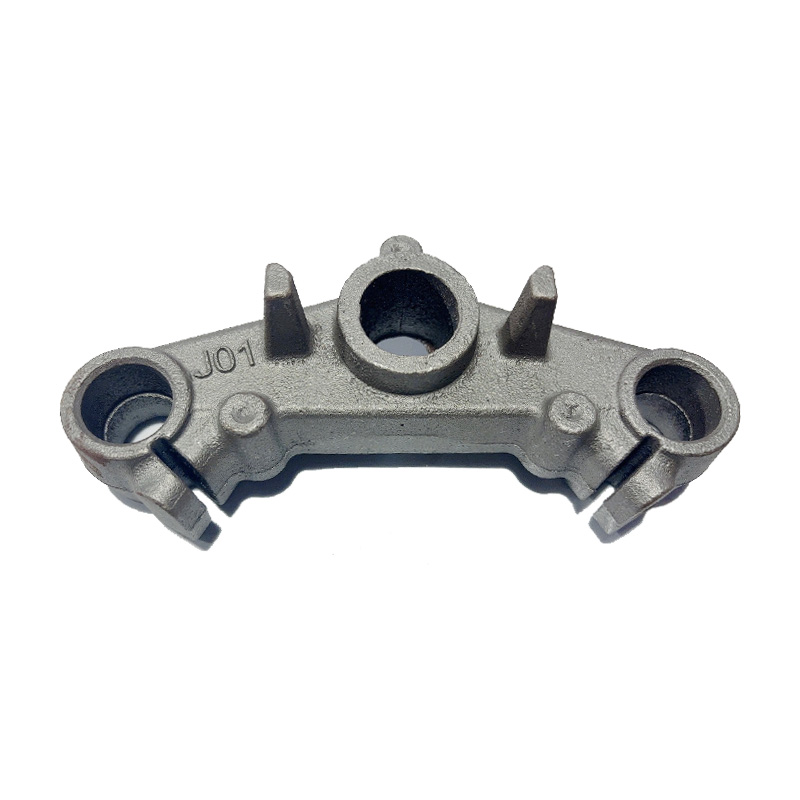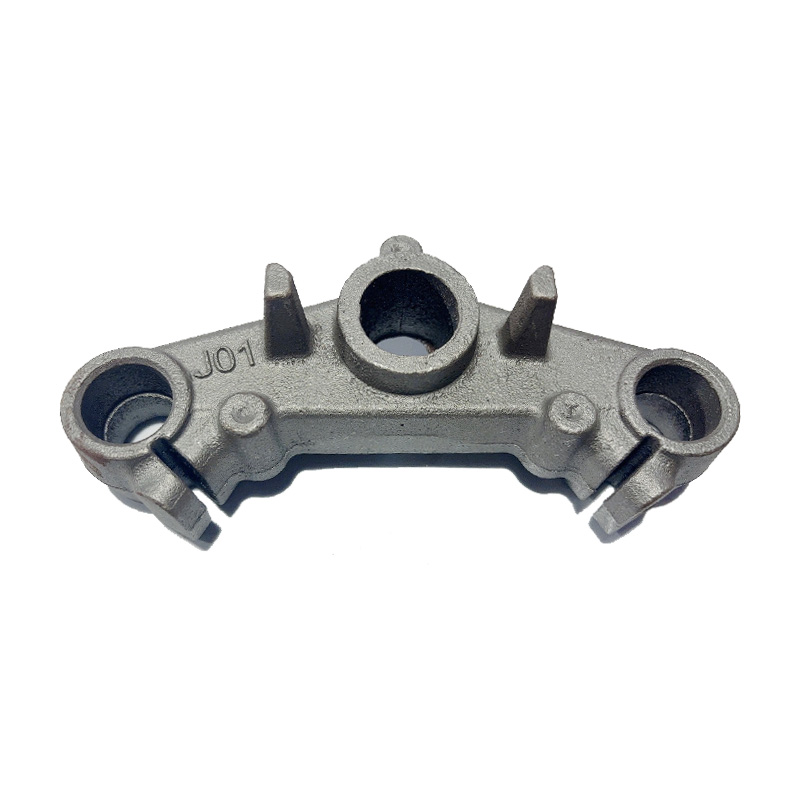

Aluminium die casting components are metal parts produced through the die casting process using aluminium or its alloys. This manufacturing technique involves forcing molten aluminium under high pressure into a steel mold cavity. Once the molten metal cools and solidifies, it takes the shape of the mold cavity, resulting in a precision-made component.

The production of aluminium die casting components involves several key steps, each critical to ensuring the quality and performance of the final product. Here's a detailed overview of the process:
Material Preparation
Alloy Selection: The choice of aluminium alloy depends on the specific application requirements such as strength, corrosion resistance, and machinability. Common alloys include A356, A380, and ADC12.
Melting and Alloying: The selected alloy is melted in a furnace at temperatures typically ranging from 600 to 760°C (1112 to 1400°F). Alloying elements may be added to enhance the material's properties.
Die Preparation
Die Design: The die is designed using CAD software to precise specifications, ensuring that the cast component will meet all dimensional and tolerance requirements.
Die Manufacturing: The die is then machined from high-strength steel or tool steel. The internal cavity of the die is polished to achieve the desired surface finish on the cast component.
Die Casting Process
Mold Filling: The molten aluminium is injected into the die cavity under high pressure, typically ranging from 10 to 175 MPa (1450 to 25,380 psi). This pressure helps to fill the mold cavity completely and eliminates porosity.
Cooling and Solidification: The molten metal cools rapidly within the die, solidifying into the desired shape. The cooling rate is controlled to optimize the microstructure and mechanical properties of the cast component.
Ejection and Post-Processing
Ejection: Once the metal has fully solidified, the die is opened, and the cast component is ejected from the mold.
Post-Processing: The ejected component may undergo various post-processing steps such as trimming excess material, shot blasting for surface preparation, and heat treatment to enhance mechanical properties.
Several technical indicators are crucial in evaluating the quality and performance of aluminium die casting components. These indicators include:
Dimensional Accuracy
The dimensional accuracy of the cast component is critical to ensuring it fits correctly within the assembly. Tight tolerances are maintained throughout the die casting process to achieve the desired dimensions.
Surface Finish
The surface finish of the cast component can affect its appearance, corrosion resistance, and functionality. A smooth surface finish is often achieved through die polishing and shot blasting.
Mechanical Properties
Mechanical properties such as tensile strength, yield strength, ductility, and hardness are essential for the component's performance in its intended application. These properties are influenced by alloy composition, die casting parameters, and post-processing steps.
Microstructure
The microstructure of the cast component, including grain size and phase distribution, can significantly impact its mechanical properties and corrosion resistance. Proper cooling rates and heat treatment processes are critical in controlling microstructure.
Porosity and Inclusions
Porosity and inclusions can weaken the component and reduce its mechanical properties. Careful control of the die casting process, including mold filling speed and pressure, can minimize porosity and inclusions.
| Name | Aluminium Die Casting Components |
| Material | ZG35 |
| Process | Water Glass Investment Casting |
| Weight | 4.8 Kg |
| Product Standard | GB/T699-88 |
| Factory Nature | China Manufacturers Suppliers Factory |
| OEM/ODM | Accept |
Aluminium die casting components are widely used in the automotive industry due to their combination of lightweight, strength, and corrosion resistance. Here are some key applications:
Engine Components
Aluminium die castings are used for engine components such as cylinder heads, cylinder blocks, and oil pans. These components require high thermal conductivity and strength to withstand the extreme temperatures and pressures within the engine.
Transmission Components
Transmission cases, gear housings, and other transmission components are often made from aluminium die castings. These components must be lightweight and durable to ensure smooth and efficient gear changes.
Suspension Components
Suspension control arms, knuckles, and other components benefit from the lightweight and corrosion resistance of aluminium die castings. This helps to improve vehicle handling and reduce fuel consumption.
Body and Chassis Components
Aluminium die castings are used for various body and chassis components, including frame rails, crossmembers, and brackets. These components require high strength and stiffness to support the vehicle's structure and payload.
Electrical Components
Aluminium die castings are also used for electrical components such as battery housings and electrical connectors. Their corrosion resistance and ability to dissipate heat make them ideal for these applications.
Customizing aluminium die casting components involves several steps to ensure that the final product meets the specific needs of the customer. Here's an overview of the customization process:
Consultation and Design
The customization process begins with a consultation between the customer and the die casting manufacturer. During this consultation, the customer provides detailed specifications and requirements for the component.
The manufacturer then uses CAD software to design the component, ensuring that it meets all dimensional, tolerance, and material requirements.
Die Manufacturing
Once the design is finalized, the manufacturer proceeds to manufacture the die using high-strength steel or tool steel. The die is precision-machined to match the component's design specifications.
Tooling and Setup
The die is then installed in the die casting machine, and the tooling and setup process begins. This includes aligning the die, setting the injection parameters, and ensuring that the cooling system is functioning properly.
Production and Quality Control
Production of the customized component begins once the tooling and setup are complete. The manufacturer closely monitors the die casting process to ensure that the component meets all quality standards.
Quality control checks are performed throughout the production process, including inspections for dimensional accuracy, surface finish, and mechanical properties.
Post-Processing and Delivery
After production, the customized component may undergo various post-processing steps such as trimming, shot blasting, and heat treatment.
Once post-processing is complete, the component is inspected again for quality and then packaged and shipped to the customer.
Q: What are the advantages of aluminium die casting?
A: Aluminium die casting offers several advantages, including the ability to produce complex shapes with thin walls, high dimensional accuracy, excellent surface finish, and short production cycles. It is also a cost-effective manufacturing process for producing large volumes of components.
Q: Can I customize the design of my aluminium die casting component?
A: Yes, aluminium die casting components can be customized to meet specific design requirements. The manufacturer will work with you to develop a CAD design that meets your specifications, and then manufacture a die to produce the component.
Q: What materials can be used for aluminium die casting?
A: Various aluminium alloys can be used for die casting, depending on the specific application requirements. Common alloys include A356, A380, and ADC12. Each alloy has unique properties such as strength, corrosion resistance, and machinability.
Q: How do I ensure the quality of my aluminium die casting component?
A: Quality control is critical in ensuring the quality of aluminium die casting components. The manufacturer should perform inspections throughout the production process, including checks for dimensional accuracy, surface finish, and mechanical properties. Additionally, post-processing steps such as shot blasting and heat treatment can enhance the component's quality and performance.
Q: What is the lead time for producing aluminium die casting components?
A: The lead time for producing aluminium die casting components can vary depending on several factors, including the complexity of the design, the size of the order, and the manufacturer's current workload. However, die casting is generally a faster manufacturing process compared to other methods such as machining or forging.